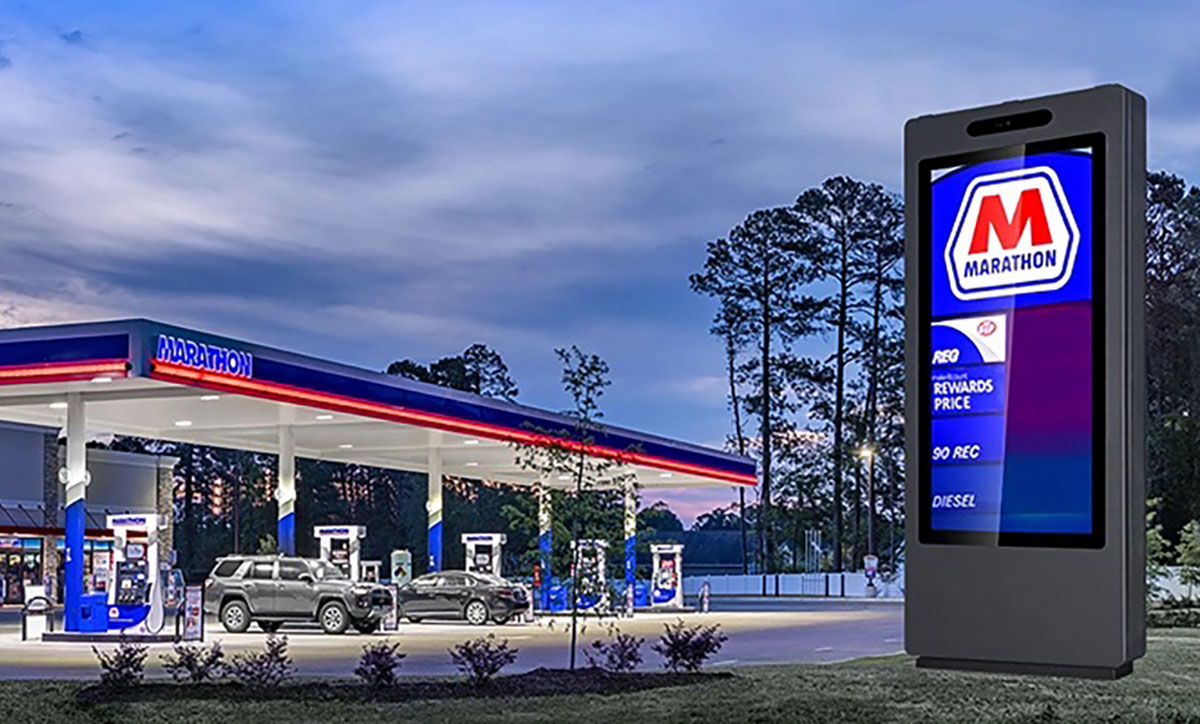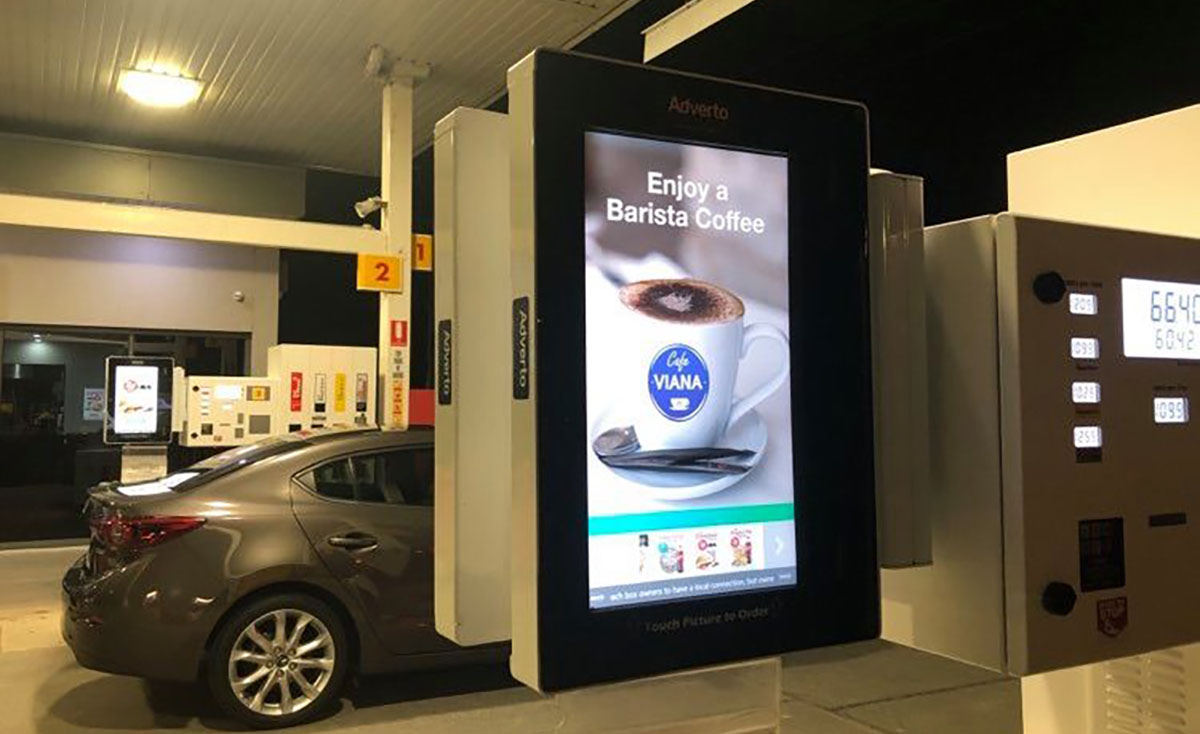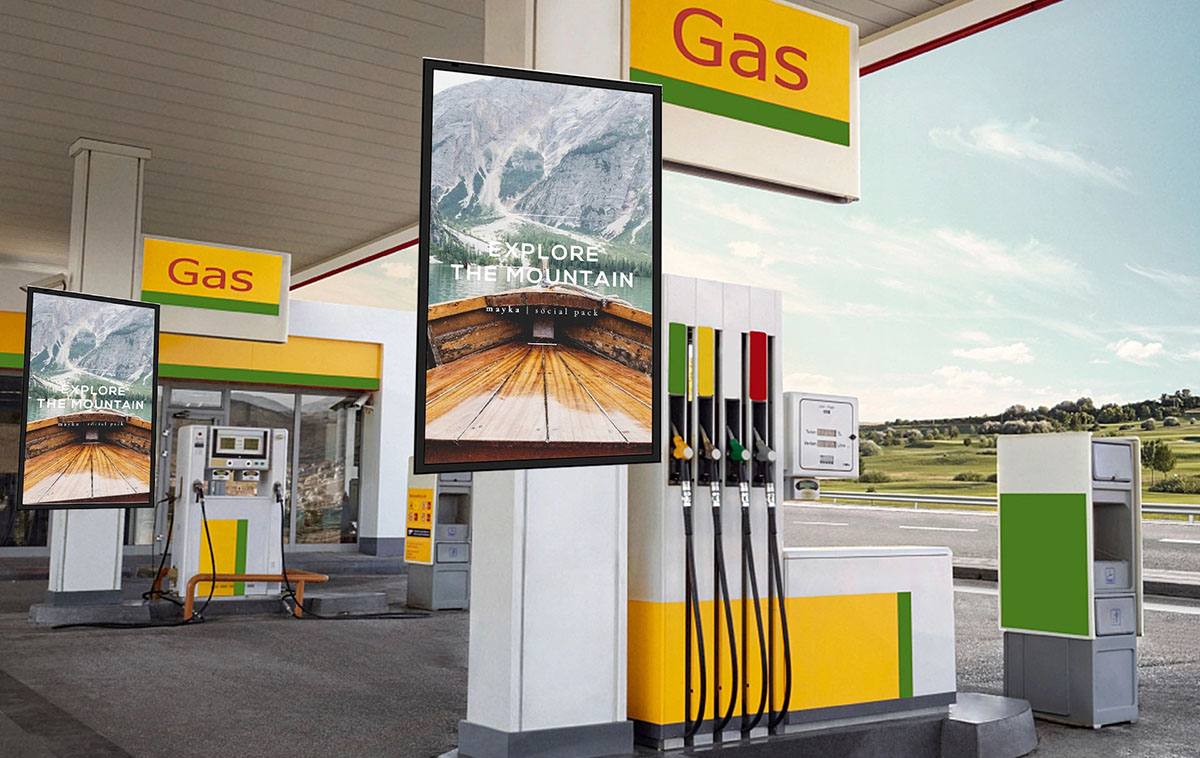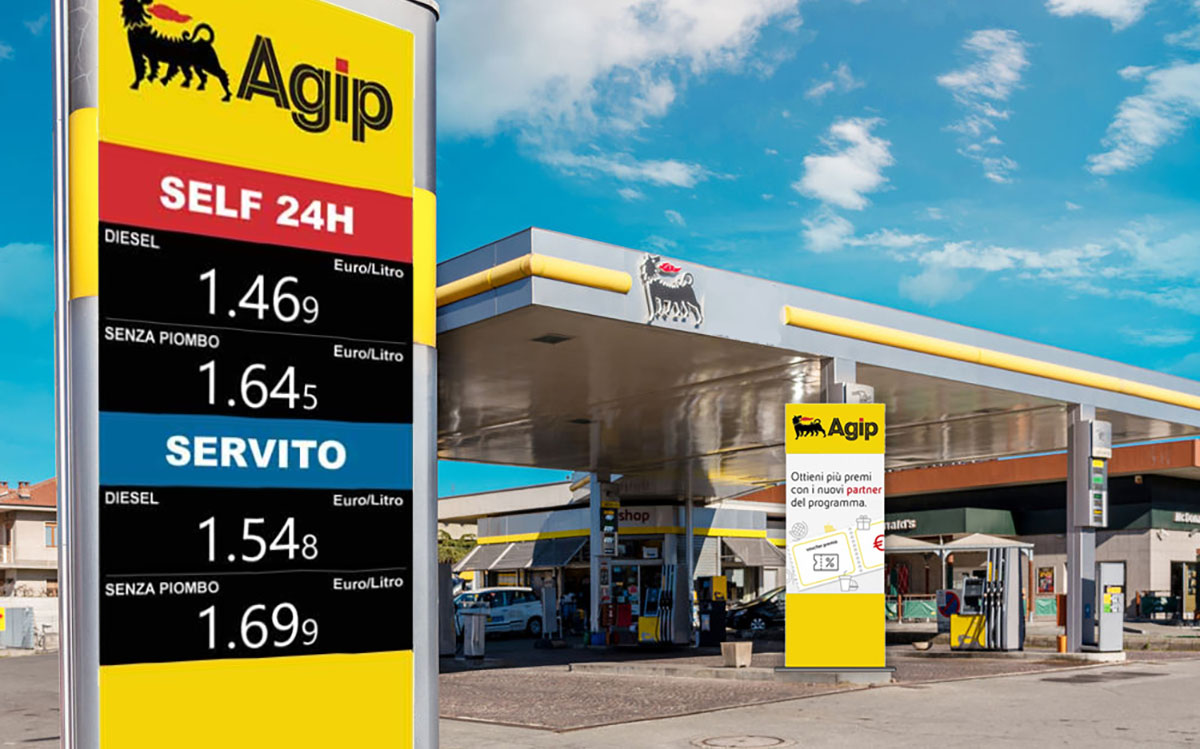Gas Station Digital Signage Application Guide
Published:2024-02-21Views:2092
At present, traditional gas stations have gradually evolved into a comprehensive service platform. In this transformation process, digital signage at gas stations is playing an increasingly important role as an innovative marketing and information service tool.
This article will conduct an in-depth discussion of the definition, characteristics, application scenarios, and advantages and challenges of digital signage at gas stations.
Definition: Gas station digital signage is a digital display device installed inside or outside the gas station to display various information and services. Compared with traditional paper signs and static billboards, gas station digital signs have the following salient features:
Real-time s: Digital signage can display content in real time. Whether it is oil price changes, promotional information or weather forecasts, it can be quickly and accurately conveyed to consumers.
Multimedia display: In addition to text, digital signage can also display pictures, videos and other media forms to make information more vivid and intuitive.
Highly interactive: Some digital signs are equipped with touch screens or other interactive devices. Consumers can directly participate in interactions, query product information, participate in draws, etc.
Personalized recommendations: By analyzing consumer behavior and preferences, digital signage can implement personalized content recommendations and improve marketing effectiveness.
Energy saving and environmental protection: Compared with traditional paper signs, digital signs do not need to be replaced frequently, which not only saves resources but also reduces environmental pollution.
Digital signage at gas stations is widely used in different areas and links of gas stations. The following are some typical application scenarios:
Entrance area: Set up digital signage at a prominent location at the entrance of the gas station to display the gas station’s brand logo, services and promotional information to attract consumers’ attention.
Refueling area: Set up digital signage next to the refueling machine to display information such as oil prices and oil product types to facilitate consumers to make choices. At the same time, value-added services such as nearby restaurants and convenience stores can also be displayed to improve consumers’ shopping experience.
Convenience store area: Set up digital signage inside the convenience store to display product information, promotions, coupons, etc. to guide consumers to purchase. By interacting with digital signage, consumers can also learn detailed information and reviews of products and make more informed purchasing decisions.
Rest area: Set up digital signage in the rest area of the gas station to display entertainment programs, weather forecasts, travel recommendations and other content to provide consumers with a rich leisure experience.
As an innovative marketing and information service tool, digital signage at gas stations brings many advantages to gas stations, but it also faces some challenges.
Advantage:
Improve the efficiency of information transmission: Digital signage can display content in real time to ensure that consumers receive the latest and most accurate information.
Enhance brand image: Through the multimedia display and personalized recommendations of digital signage, gas stations can display their brand image and service features, and enhance consumer awareness and favorability.
Promote sales growth: Digital signage can display promotional information and value-added services to guide consumers to purchase more goods and services, thereby increasing sales.
Improve customer satisfaction: The rich information and convenient services provided by digital signage can enhance consumers' shopping experience and increase customer satisfaction and loyalty.
challenge:
Technology cost: Digital signage requires professional display equipment and technical support, which will increase the cost of gas stations.
Content and management: The content of digital signage needs to be d and managed regularly to ensure the accuracy and timeliness of the information. This requires professional training and management of content production and operations teams.
Consumer adaptability: Although digital signage provides more convenient information services, some consumers may not be familiar with its operation and usage, and it will take some time to adapt.
As an innovative marketing and information service tool, gas station digital signage plays an increasingly important role in the construction of a comprehensive service platform for gas stations. In the future, with the integration and application of artificial intelligence, big data analysis and other technologies, digital signage at gas stations will achieve more intelligent and personalized services, providing consumers with a more convenient and efficient shopping experience.
This article will conduct an in-depth discussion of the definition, characteristics, application scenarios, and advantages and challenges of digital signage at gas stations.

1. What is gas station digital signage?
Definition: Gas station digital signage is a digital display device installed inside or outside the gas station to display various information and services. Compared with traditional paper signs and static billboards, gas station digital signs have the following salient features:
2. Characteristics of digital signage at gas stations

Real-time s: Digital signage can display content in real time. Whether it is oil price changes, promotional information or weather forecasts, it can be quickly and accurately conveyed to consumers.
Multimedia display: In addition to text, digital signage can also display pictures, videos and other media forms to make information more vivid and intuitive.
Highly interactive: Some digital signs are equipped with touch screens or other interactive devices. Consumers can directly participate in interactions, query product information, participate in draws, etc.
Personalized recommendations: By analyzing consumer behavior and preferences, digital signage can implement personalized content recommendations and improve marketing effectiveness.
Energy saving and environmental protection: Compared with traditional paper signs, digital signs do not need to be replaced frequently, which not only saves resources but also reduces environmental pollution.
3. Application scenarios of digital signage at gas stations

Digital signage at gas stations is widely used in different areas and links of gas stations. The following are some typical application scenarios:
Entrance area: Set up digital signage at a prominent location at the entrance of the gas station to display the gas station’s brand logo, services and promotional information to attract consumers’ attention.
Refueling area: Set up digital signage next to the refueling machine to display information such as oil prices and oil product types to facilitate consumers to make choices. At the same time, value-added services such as nearby restaurants and convenience stores can also be displayed to improve consumers’ shopping experience.
Convenience store area: Set up digital signage inside the convenience store to display product information, promotions, coupons, etc. to guide consumers to purchase. By interacting with digital signage, consumers can also learn detailed information and reviews of products and make more informed purchasing decisions.
Rest area: Set up digital signage in the rest area of the gas station to display entertainment programs, weather forecasts, travel recommendations and other content to provide consumers with a rich leisure experience.
4. Advantages and challenges of digital signage at gas stations

As an innovative marketing and information service tool, digital signage at gas stations brings many advantages to gas stations, but it also faces some challenges.
Advantage:
Improve the efficiency of information transmission: Digital signage can display content in real time to ensure that consumers receive the latest and most accurate information.
Enhance brand image: Through the multimedia display and personalized recommendations of digital signage, gas stations can display their brand image and service features, and enhance consumer awareness and favorability.
Promote sales growth: Digital signage can display promotional information and value-added services to guide consumers to purchase more goods and services, thereby increasing sales.
Improve customer satisfaction: The rich information and convenient services provided by digital signage can enhance consumers' shopping experience and increase customer satisfaction and loyalty.
challenge:
Technology cost: Digital signage requires professional display equipment and technical support, which will increase the cost of gas stations.
Content and management: The content of digital signage needs to be d and managed regularly to ensure the accuracy and timeliness of the information. This requires professional training and management of content production and operations teams.
Consumer adaptability: Although digital signage provides more convenient information services, some consumers may not be familiar with its operation and usage, and it will take some time to adapt.
5. Conclusion and outlook
As an innovative marketing and information service tool, gas station digital signage plays an increasingly important role in the construction of a comprehensive service platform for gas stations. In the future, with the integration and application of artificial intelligence, big data analysis and other technologies, digital signage at gas stations will achieve more intelligent and personalized services, providing consumers with a more convenient and efficient shopping experience.
























































.png)














